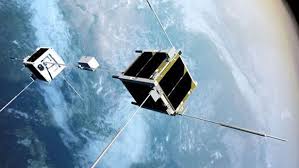
Breaking News
 $26M Frozen on Blockchain - With One Click
$26M Frozen on Blockchain - With One Click
 Italy are on national strike shutdown rejecting digital enslavement...
Italy are on national strike shutdown rejecting digital enslavement...
 The following U.S. states are currently using the rebranded "Reporty Homeland Security" so
The following U.S. states are currently using the rebranded "Reporty Homeland Security" so
 NATO Chief Urges Europe To Prepare For Long-Term World War With Russia, China, Iran & North Korea
NATO Chief Urges Europe To Prepare For Long-Term World War With Russia, China, Iran & North Korea
Top Tech News
 HUGE 32kWh LiFePO4 DIY Battery w/ 628Ah Cells! 90 Minute Build
HUGE 32kWh LiFePO4 DIY Battery w/ 628Ah Cells! 90 Minute Build
 What Has Bitcoin Become 17 Years After Satoshi Nakamoto Published The Whitepaper?
What Has Bitcoin Become 17 Years After Satoshi Nakamoto Published The Whitepaper?
 Japan just injected artificial blood into a human. No blood type needed. No refrigeration.
Japan just injected artificial blood into a human. No blood type needed. No refrigeration.
 The 6 Best LLM Tools To Run Models Locally
The 6 Best LLM Tools To Run Models Locally
 Testing My First Sodium-Ion Solar Battery
Testing My First Sodium-Ion Solar Battery
 A man once paralyzed from the waist down now stands on his own, not with machines or wires,...
A man once paralyzed from the waist down now stands on his own, not with machines or wires,...
 Review: Thumb-sized thermal camera turns your phone into a smart tool
Review: Thumb-sized thermal camera turns your phone into a smart tool
 Army To Bring Nuclear Microreactors To Its Bases By 2028
Army To Bring Nuclear Microreactors To Its Bases By 2028
 Nissan Says It's On Track For Solid-State Batteries That Double EV Range By 2028
Nissan Says It's On Track For Solid-State Batteries That Double EV Range By 2028
Lasers help keep CubeSats on target to handle large data downlinks

An MIT team is working on a new aiming system that will allow CubeSats to use lasers for high-bandwidth communications with Earth. The new laser-pointing platform uses a second directional beam to keep the primary data beam on focus, allowing the CubeSat to transmit large amounts of data without the need for heavy antennae or wasting propellant.
With their low cost and size of about that of a loaf of bread, CubeSats have a tremendous potential to revolutionize the scientific, commercial, and military exploration and exploitation of space. Instead of a single, large satellite that may not be where it's needed when it's needed, CubeSats can be sent up at a moment's notice or in huge constellations for global coverage of things like the weather or anti-missile defenses.
But one major drawback for CubeSats is that they aren't very good when it comes to sending back data. Lacking the powerful radio transmitters and large antennae of their bigger siblings, CubeSats can only send back data the equivalent of a few images at a time. However, to make them more practical, CubeSats need to be able to send back things like hyperspectral images in large numbers and quickly. That means being able to transmit data by the terabyte at a high rate.

 Carbon based computers that run on iron
Carbon based computers that run on iron

